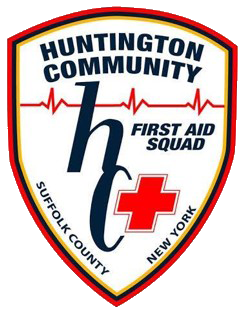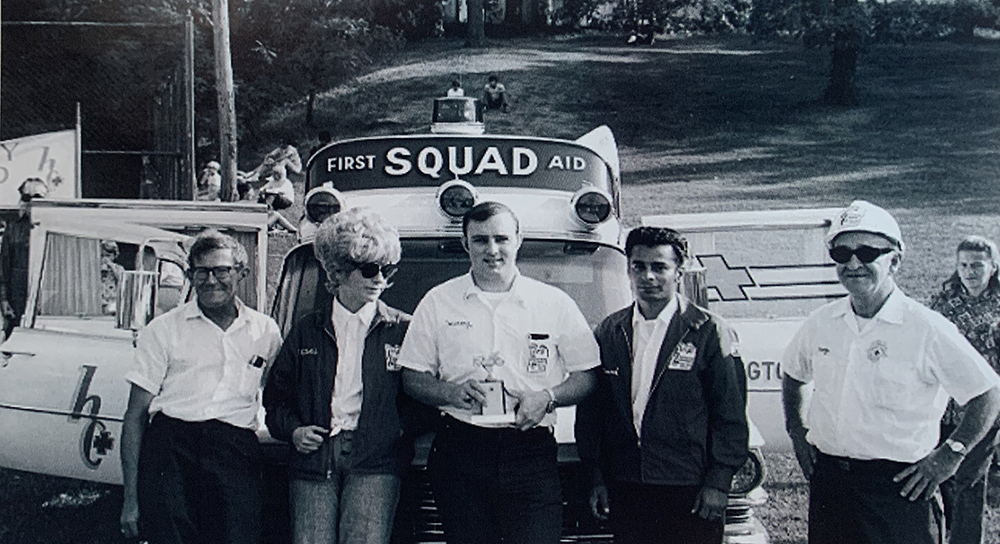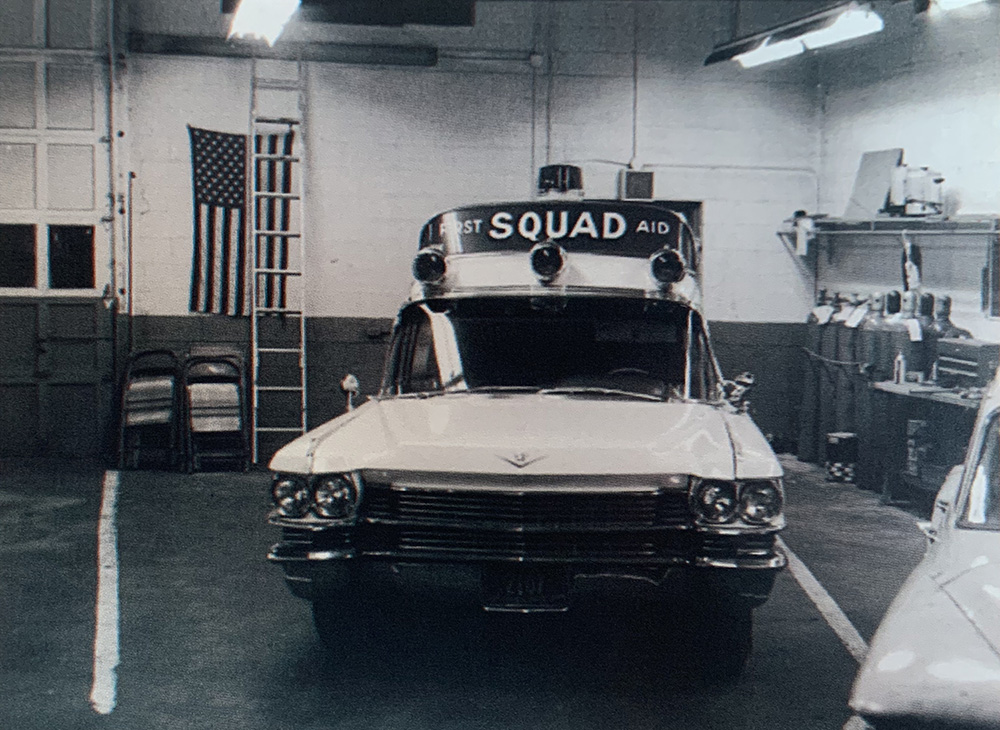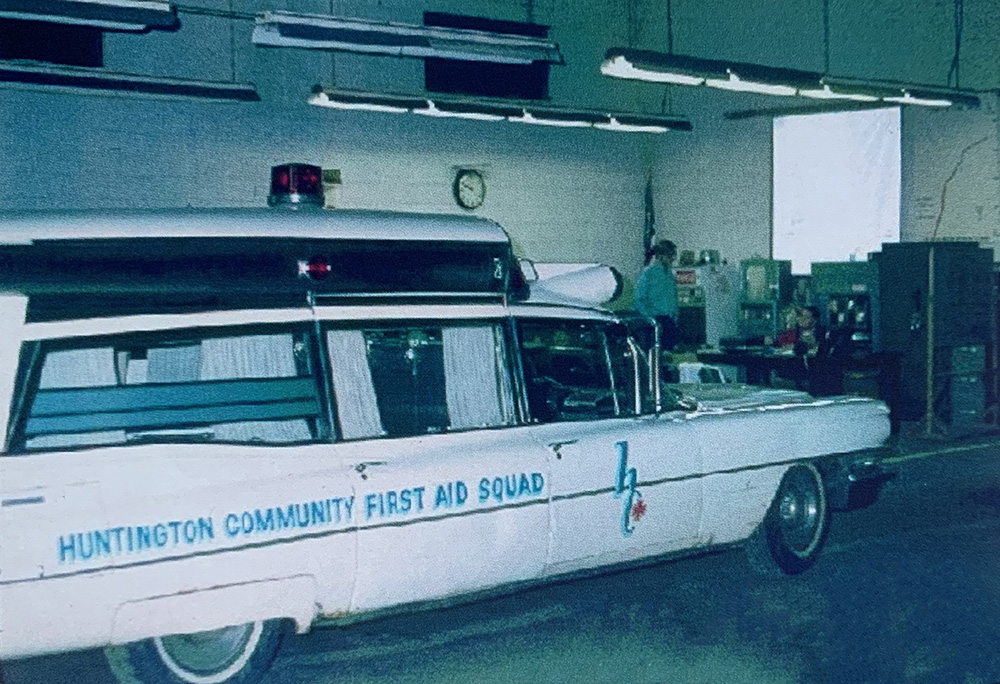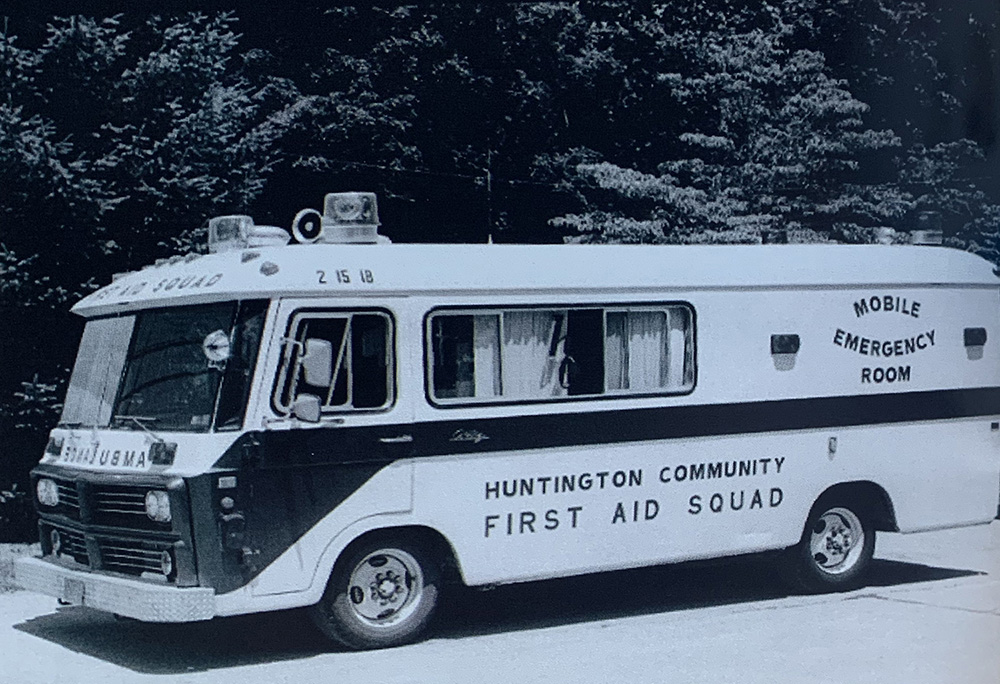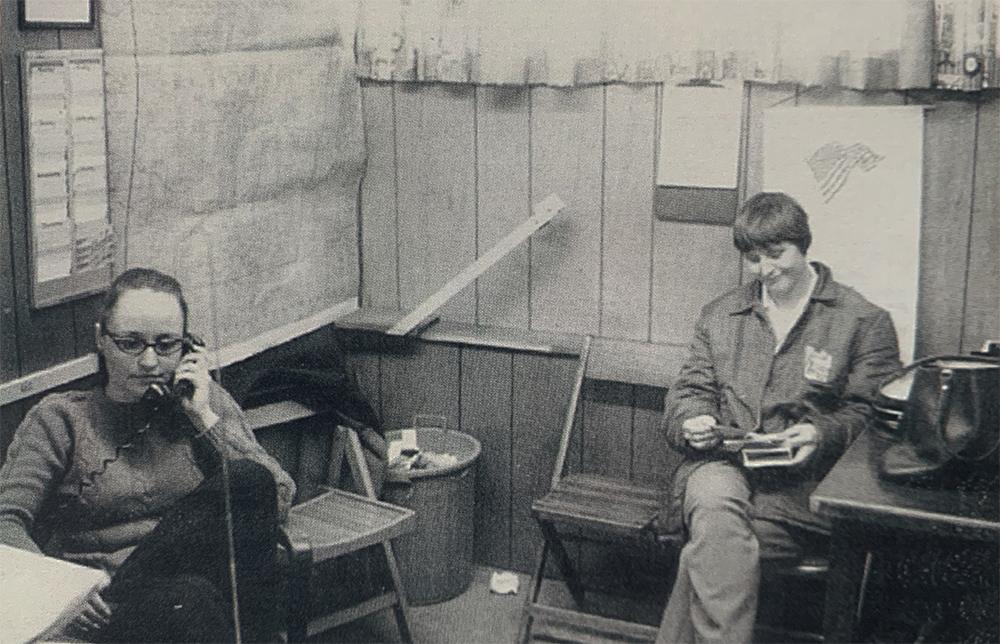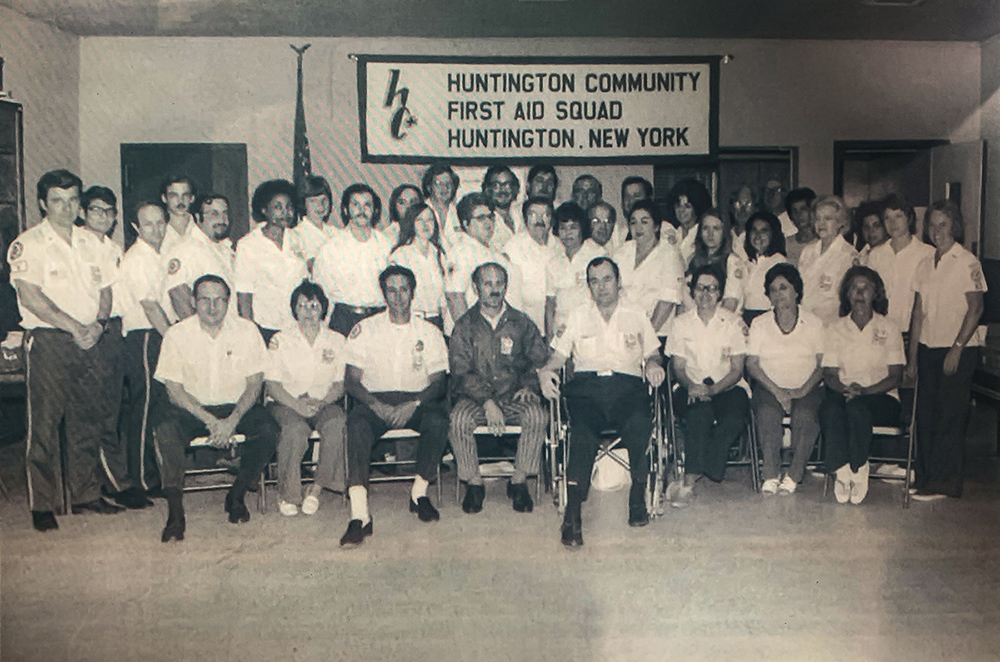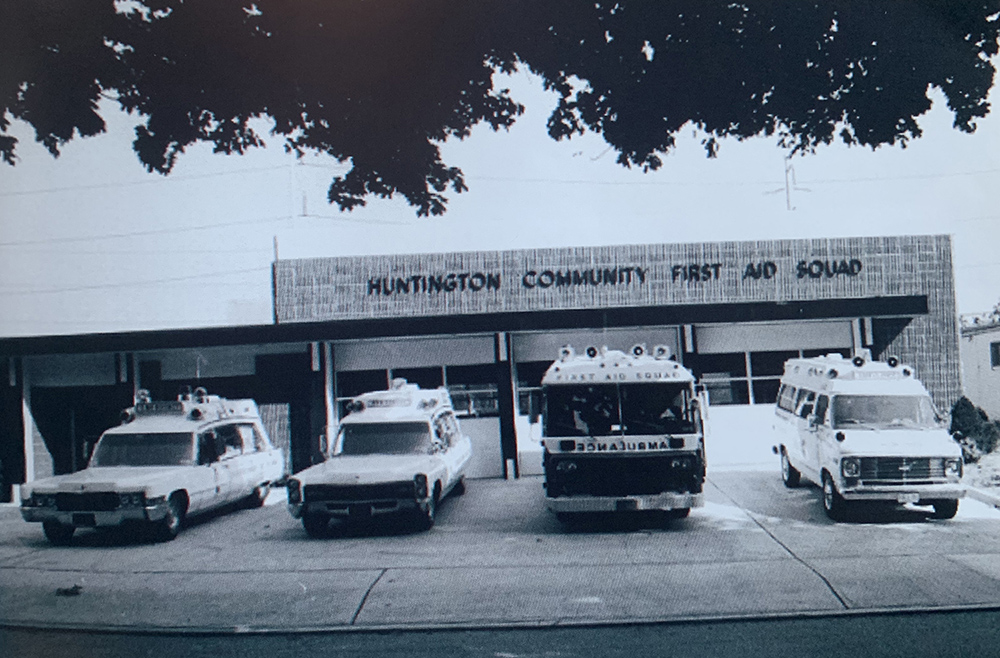
Always call 911 in an emergency
History of the Huntington Community First Aid Squad
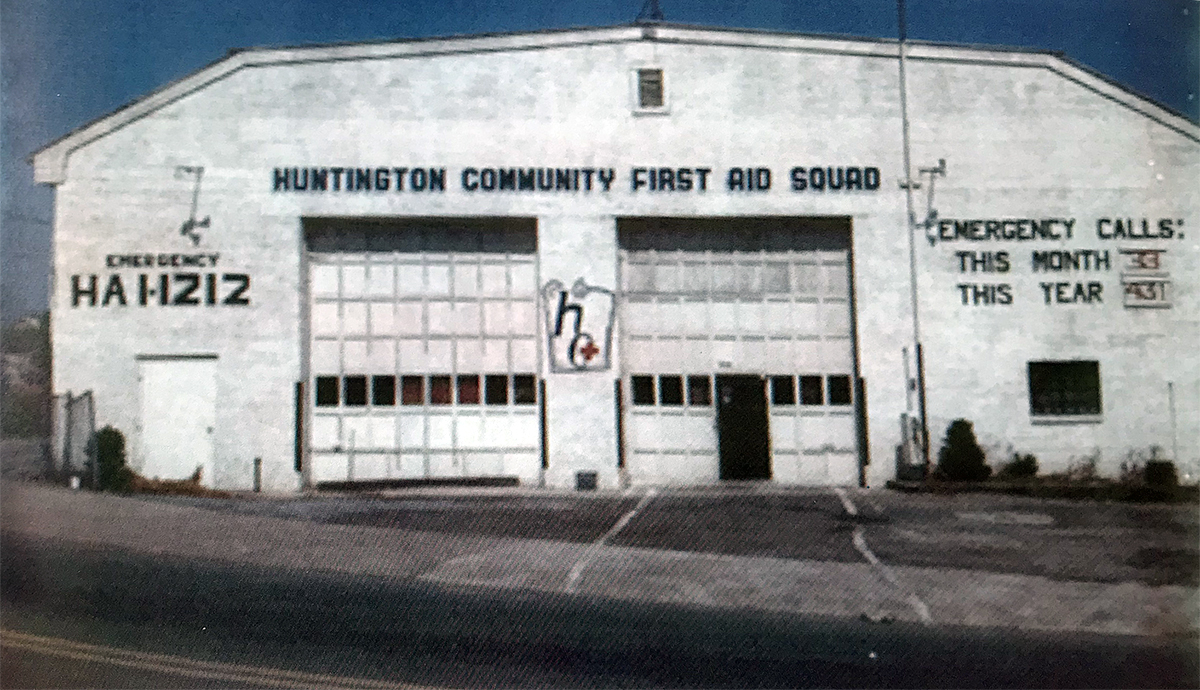
Origins: 1967
Before 1967, there wasn’t a “public emergency ambulance corps” for the western part of the town. Several private ambulances filled in and answered emergency calls that came in from the Huntington Police, and then later from the Suffolk Police and from the public. Several nearby fire rescue units did what they could to augment this service. The private ambulances had to charge the callers (patients), which was another difficulty during the collection phase. One of the largest ambulance companies was gradually getting out the “emergency ambulance” business… they preferred to stay in the “non emergency type call” business. This compounded the situation. As the town grew and the population demands increased, the private ambulances answered more calls and the rescue squads from other parts of the town increased their calls as well.
Origins: 1967
Before 1967, there wasn’t a “public emergency ambulance corps” for the western part of the town. Several private ambulances filled in and answered emergency calls that came in from the Huntington Police, and then later from the Suffolk Police and from the public. Several nearby fire rescue units did what they could to augment this service. The private ambulances had to charge the callers (patients), which was another difficulty during the collection phase. One of the largest ambulance companies was gradually getting out the “emergency ambulance” business… they preferred to stay in the “non emergency type call” business. This compounded the situation. As the town grew and the population demands increased, the private ambulances answered more calls and the rescue squads from other parts of the town increased their calls as well.

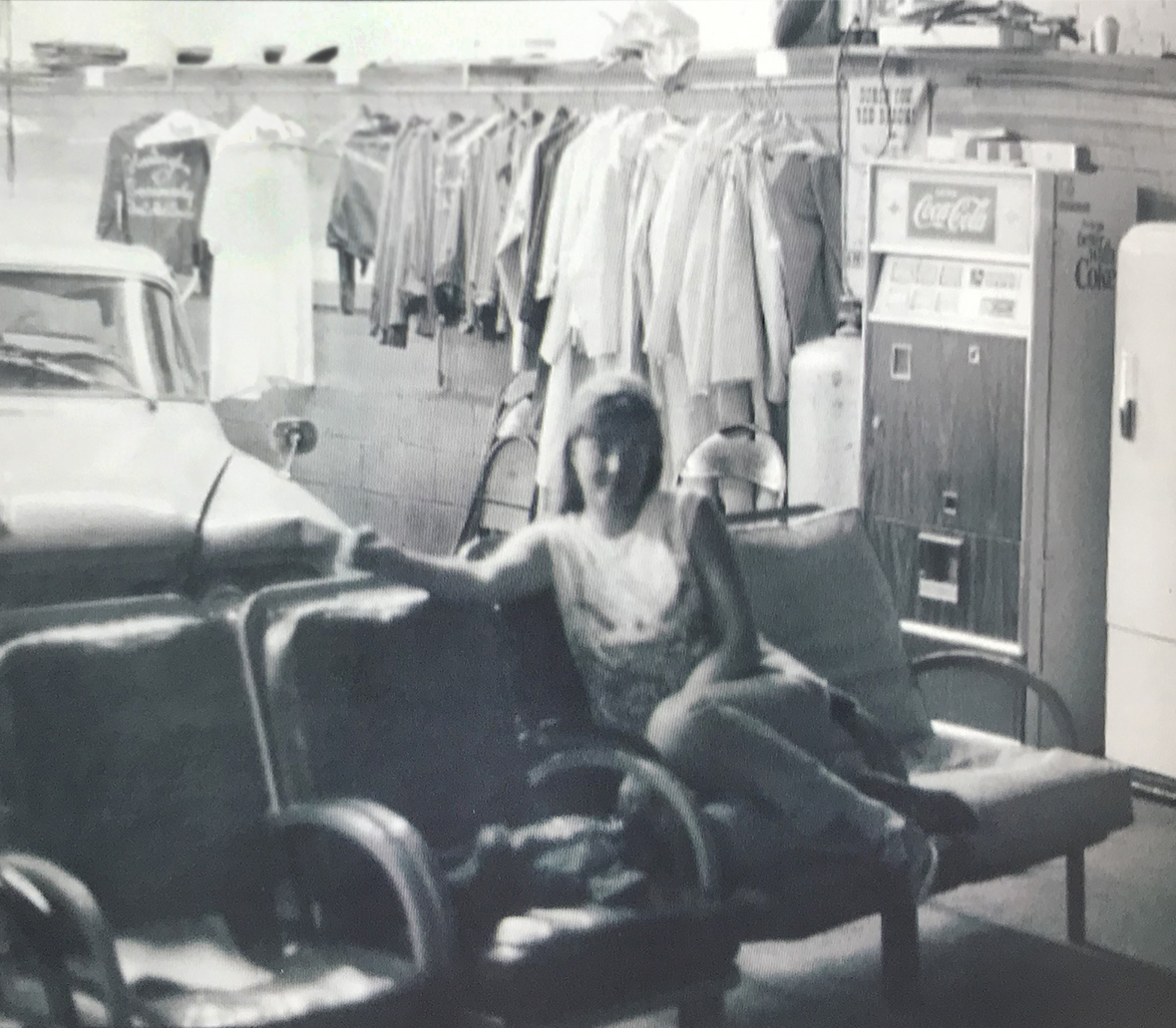
The problem became increasingly evident when some calls took to long for a response. There were some local newspaper articles about this lack of service; the problem was now in full public focus. The Town asked for a Study Committee (which included representatives from the Fire Coordinator, the local Polic Precinct Commander, the former President of the Nassau Suffolk Rescue Association and Joseph D’Andrea Sr. – who would later become the Squad’s Chief when services began) to review the problems and offer potential solutions. It took the better part of one year to study all facets of the issue, and then George Petrilak and Joseph D’Andrea Sr. presented their recommendation to the Town Board: A volunteer ambulance corps should be formed to cover Huntington, Huntington Station, South Huntington, Cold Spring Harbor, Cold Spring Hills, West Hills and Lloyd Harbor. The Town Board issued a resolution approving the formation of an emergency services corps.
Urban renewal had begun in Huntington Station. The new Squad needed a location to operate out of and had no funds. The Town had already taken over a structure at 268 Lowndes Ave. and allowed the Squad to use it as a temporary headquarters in 1967. There was a very small bunk room, dispatch office and the main room: ready room, kitchen and truck room all combined. HCFAS was to be there one year. The Squad ended up there for a little over four years.
The problem became increasingly evident when some calls took to long for a response. There were some local newspaper articles about this lack of service; the problem was now in full public focus. The Town asked for a Study Committee (which included representatives from the Fire Coordinator, the local Polic Precinct Commander, the former President of the Nassau Suffolk Rescue Association and Joseph D’Andrea Sr. – who would later become the Squad’s Chief when services began) to review the problems and offer potential solutions. It took the better part of one year to study all facets of the issue, and then George Petrilak and Joseph D’Andrea Sr. presented their recommendation to the Town Board: A volunteer ambulance corps should be formed to cover Huntington, Huntington Station, South Huntington, Cold Spring Harbor, Cold Spring Hills, West Hills and Lloyd Harbor. The Town Board issued a resolution approving the formation of an emergency services corps.
Urban renewal had begun in Huntington Station. The new Squad needed a location to operate out of and had no funds. The Town had already taken over a structure at 268 Lowndes Ave. and allowed the Squad to use it as a temporary headquarters in 1967. There was a very small bunk room, dispatch office and the main room: ready room, kitchen and truck room all combined. HCFAS was to be there one year. The Squad ended up there for a little over four years.

By November, 1967 over 70 names were listed on the first membership roster. The Squad was also able to purchase their first ambulance – a 1964 Cadillac, Sayer and Scoveill. It could carry 4 prone victims. HCFAS was able to add another ambulance while still in the original building. They were called “Unit 1 and Unit 2”.
On December 30, 1967 the Huntington Community First Aid Squad responded to its first call. Since that time, the Squad has ceasely operated to respond to emergencies in our community.
Urban renewal had begun in Huntington Station. The new Squad needed a location to operate out of and had no funds. The Town had already taken over a structure at 268 Lowndes Ave. and allowed the Squad to use it as a temporary headquarters in 1967. There was a very small bunk room, dispatch office and the main room: ready room, kitchen and truck room all combined. HCFAS was to be there one year. The Squad ended up there for a little over four years.
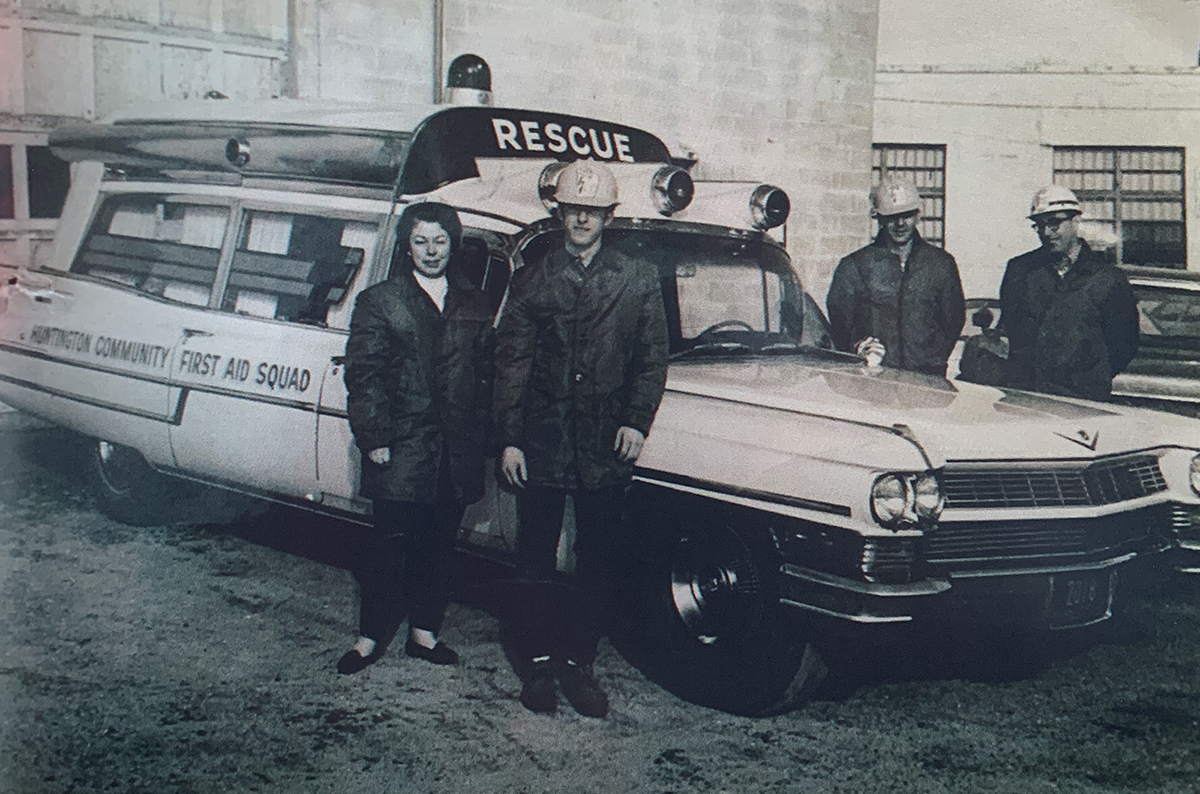
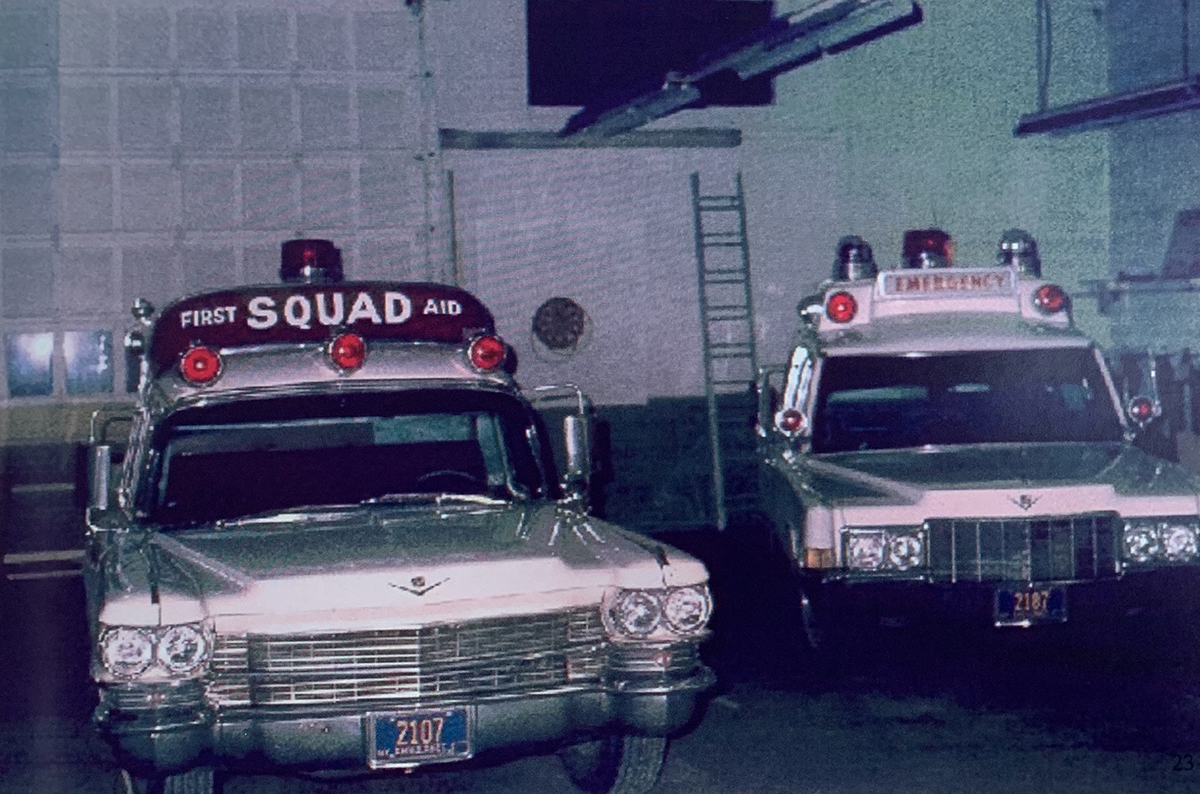
Other Historical Dates
1970: HCFAS joins the NYS Volunteer Ambulance Association.
1971: The Town agrees to lease HCFAS the property at 2 Railroad Street in exchange for ambulance services.
1972: HCFAS moves into HMFD sub-station as a temporary headquarters while the new building is constructed.
1973: HCFAS establishes the first cardiac care telemetry system in Suffolk County.
1975, September 25: Dedication of the first new HCFAS Headquarters on Railroad Street.
1992: Out of hospital DNR order become law. Sager splints are added to HCFAS equipment.
1997: Explorer Post 215 is born!
1998: HCFAS moves to a warehouse building at 156 Railroad Street, a temporary home until the new HCFAS headquarters are completed at 2 Railroad Ave.
2001: The AED program begins: HCFAS officers set a goal of being the first department to have all members trained on the device.
2002: Construction is completed at 2 Railroad Street and HCFAS moves into the new headquarters.
2004: HCFAS named REMSCO agency of the year!
2005: New signs installed around town, replacing the old call 421-1212 with dial 911 In Case of Emergency.
2009: Fire Stand-by protocol of sending 2 ambulances is implemented: one to remain at the scene and one to transport patients.
2012: Narcan pilot program implemented.
2014: Blood glucose monitors are now a BLS tool and have been placed on the ambulances and the first responder vehicles.
2016: EPI I.M. pilot program implemented as cost of epi pens soars.
